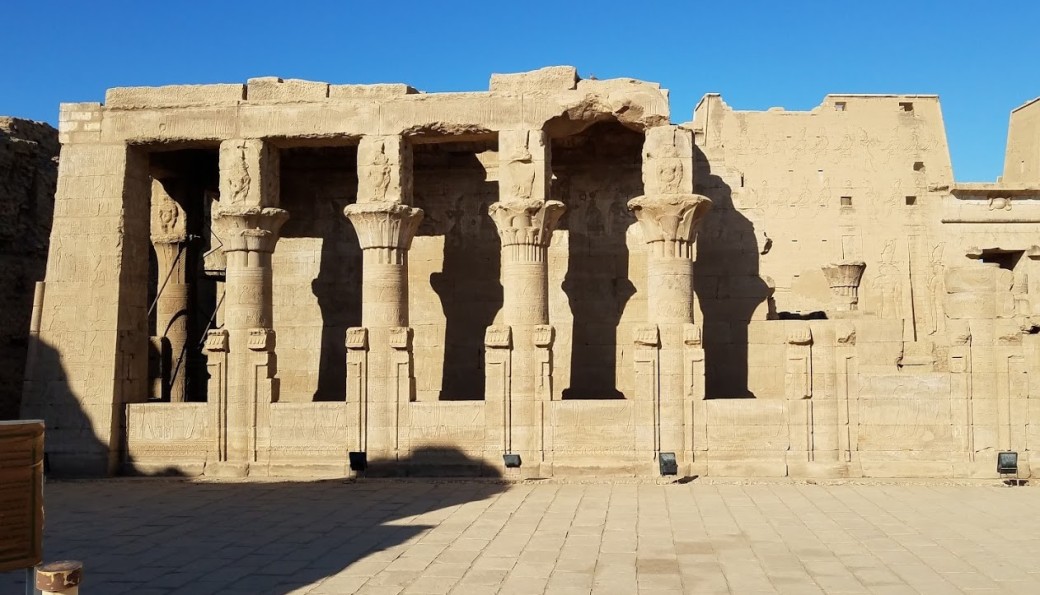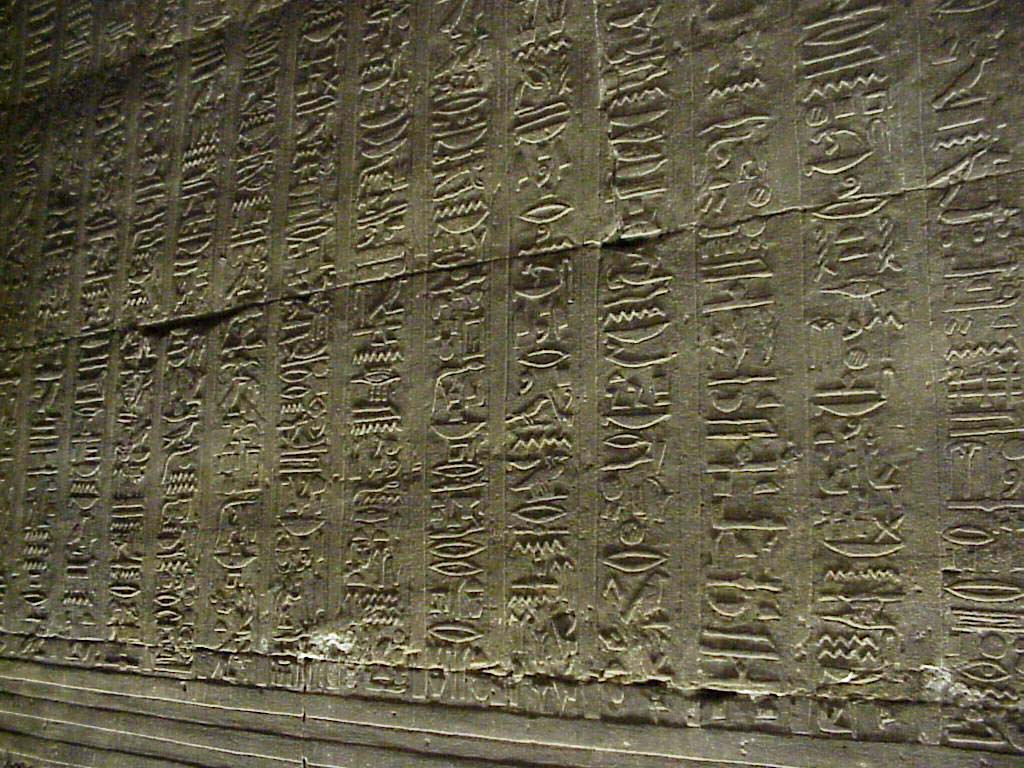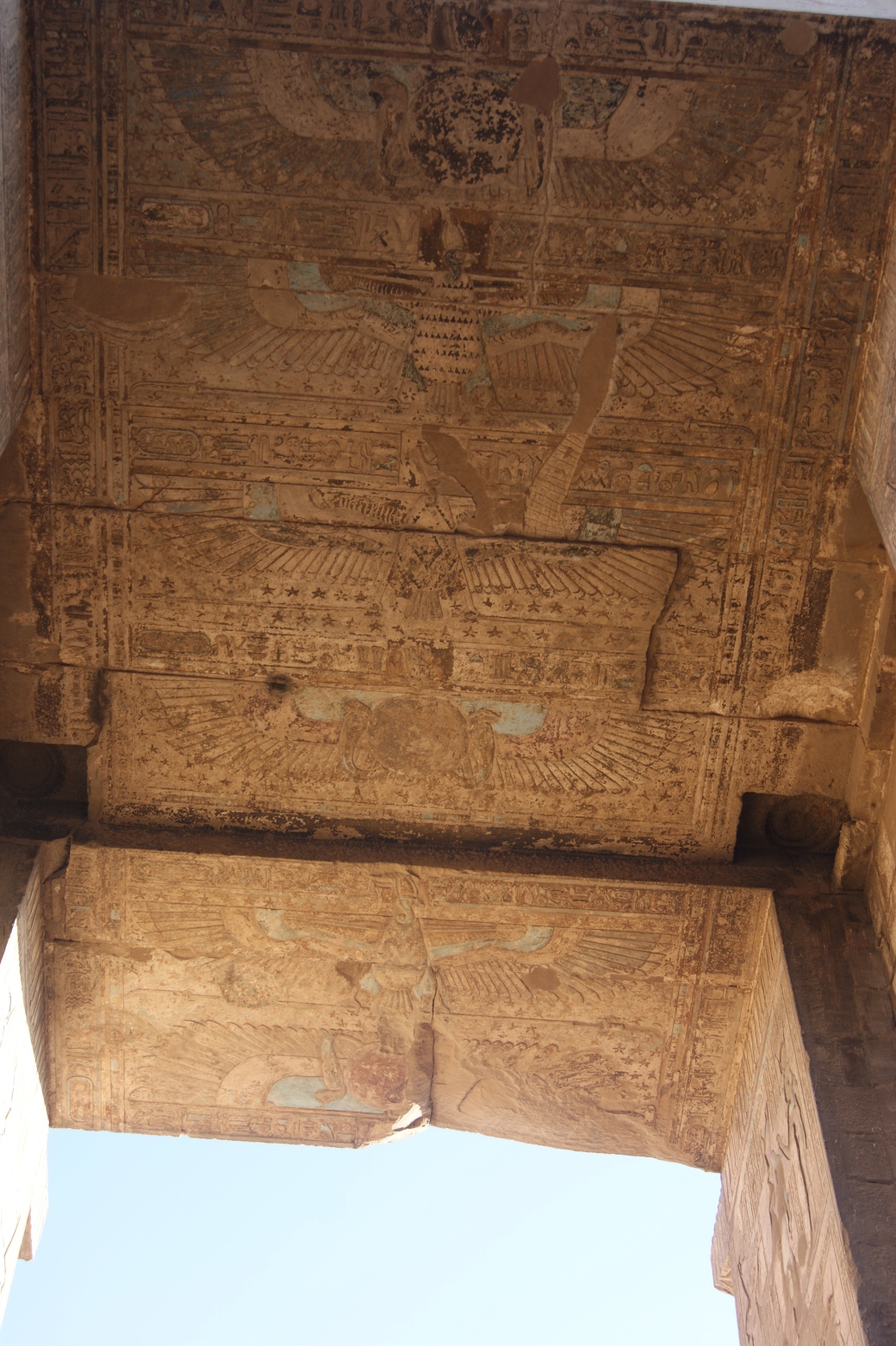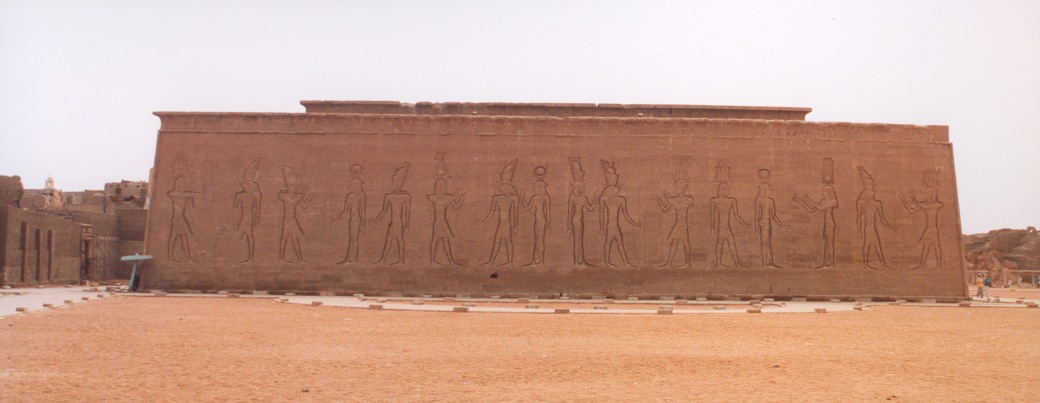December 29, 2018
After a relaxing morning cruising the Nile on the Aida, after lunch we were ready for more discoveries. We docked at the city of Edfu, where we were transported to the Temple of Horus via horses and carriages!

Our driver:

The horses clip-clopped through the dusty streets of Edfu.
Mosque as seen from the temple complex:
 We arrived at the temple where Mohamed bought us tickets.
We arrived at the temple where Mohamed bought us tickets.
Edfu Temple, or the Temple of Horus, having been dedicated to the god Horus (who was later adopted by the Greeks as Apollo), was built in the Ptolemaic Dynasty. It was begun in 237 BCE and finished in 57 BCE, during the period of Greek and Roman rule of Egypt. It is one of the better preserved of the ancient temples. It was built on the site of a smaller temple, also dedicated to Horus. A ruined pylon east of the current site is part of the original structure.

The present temple, originally contained a pillared hall, two transverse halls, and a barge sanctuary surrounded by chapels. The exterior walls are covered with texts that give details about the building’s construction.

The entrance of the pylon is flanked by a pair of statues of Horus depicted as a falcon.
Of course, we had to have a touristy photo taken standing in front of the statue of Horus! The falcon wears the “double crown” – the red and the white, signifying the union of all Egypt.

The doorway leads to the hypostyle hall, with columns typical of that Ptolemaic period, meaning that they have a variety of capitals (tops) – palm-leaf, lotus, papyrus and composite capitals.

 The bottoms of the columns, above the bases, are carved with leaves of the type found at the bases of various plants.
The bottoms of the columns, above the bases, are carved with leaves of the type found at the bases of various plants.
Beyond the hypostyle hall are a series of rooms. The last of these is the temple’s sanctuary.
The sanctuary contains a shrine of syenite (an igneous rock) that would have housed the statue of the god set in a smaller shrine made of gilded wood, and in front of the shrine is an altar.
The interior of the temple is decorated with scenes of divinities and kings making offerings to one another. There are also scenes of the conflict between the gods Horus and Seth, a theme throughout ancient Egyptian history.

The features of the figures in this relief have been scratched out, often by early Christians who thought that they could obliterate the influence of the Egyptian gods and rob them of their power. However, they could not read hieroglyphic writing that described these scenes in detail.
 The hieroglyphics on the walls describe the building of the temple and the religious interpretation of this temple.
The hieroglyphics on the walls describe the building of the temple and the religious interpretation of this temple. 
Every surface is covered with images and hieroglyphic writing.
 Colors were visible in some places, especially on ceilings and lintels.
Colors were visible in some places, especially on ceilings and lintels.

The vulture with its wings spread in combination with the cobra on the ceiling of a temple signified protection for the pharaoh.



I noticed at Edfu, unlike at other temples (at least that I noticed) there were reliefs that looked 3-dimensional: legs are rounded and arm muscles gently curve outward.



The Temple at Edfu also contains a “Nilometer” which was a method of measuring the height of the Nile River during flood season. If the water was too low, there would be famine; if too high, there would be destruction. Markings were made to show the ideal height of the river. (Image courtesy of Wikipedia)

The flood season was extremely important on the Egyptian calendar and many rituals were associated with it. The Nile was and still is the lifeblood of Egypt. As in many temples and tombs, there are scenes showing the pharaoh and the gods in sacred boats.

In spite of the temple being relatively intact, there are still sections that are in the process of excavation and restoration.
The backside of the temple, with magnificent large carvings (photo courtesy of Wikipedia):

The photo below shows the position of the temple relative to the town of Edfu. When discovered, it would have been covered with sand and the town built up around it.

Of course, as we were leaving, we had to endure the hawking of many vendors (you can’t get in and out of the site without going through a line of shops).

We got back into our horse-drawn carriages which took us back to the boat dock. We watched the sunset over Edfu and enjoyed a delicious dinner onboard the Aida.






















Amazing!
Thanks, Cindy!